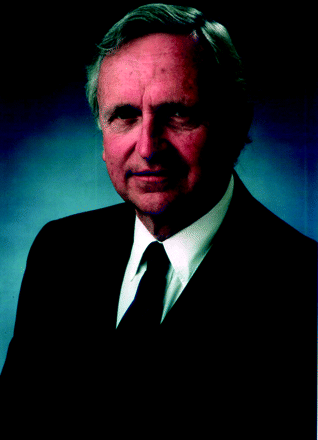Therapeutic Windows
Vorinostat (SAHA, Zolinza)
Starting from an observation of reversion of cancer cells to a normal phenotype in vitro, Vorinostat was invented via hypothesis-driven design. Vorinostat yielded no secrets of its biological target until well after it had been synthesized and tested. It was approved by the FDA in October, 2006, and is still undergoing further clinical trials against various forms of cancer, alone or in combination with other chemotherapies and with radiation. Vorinostat was the first drug approved for the inhibition of histone deacetylases (HDACs).

Discovery
For a recent review, see (1). Charlotte Friend was studying murine erythroleukemia (MEL) cells, now called “Friend cells,” and in an effort to soften them for transfection, she immersed them in 280 mM dimethylsulfoxide (DMSO) in water. After a few days she discovered that the DMSO had transformed most of the MEL cells into normal erythrocytes. She brought this to the attention of Paul Marks, at that time the Dean of Medicine at the College of Physicians and Surgeons of Columbia University. He described this finding to Ronald Breslow, Professor of Chemistry at Columbia, and they initiated a collaboration to develop new compounds that could also transform cancer cells into normal cells. With no evidence of how the DMSO worked, they simply used the transformation of MEL cells as an assay. They quickly established that simple amides were also effective, at approximately 50 mM, and then linked the amides with a chain of carbon atoms to improve efficacy by the chelate effect, which results in a much more thermodynamically stable conformation. Such linkages were successful and efficacious, leading to a simple bis-amide, hexamethylene bis-acetamide (HMBA), that was briefly evaluated in human trials. To improve potency they then made a bis-hydroxamic acid, suberoyl bis-hydroxamic acid (SBHA), and saw a significant increase in potency. With the thought that one hydroxamic acid group could be binding a metal ion (later discovered to be ZnII) they replaced the hydroxyl at the other end with a hydrophobic phenyl ring, creating suberoylanilide hydroxamic acid (SAHA).

Ronald Breslow Reminisces

Our team quickly developed to include Richard Rifkind (College of Physicians and Surgeons of Columbia University) and our coworkers, including students and postdocs in my laboratory. (Later Paul Marks became the head of the Sloan-Kettering Institute for Cancer Research, and Richard Rifkind joined him as Director of Research.) When I explained to one of my post-docs that we should try linking two amide groups together so we could get effective binding into two nearby binding sites on an unidentified enzyme, he sensibly asked what length we should use for the linker. For reasons I cannot justify I suggested that a six-methylene chain might be a good start, so he prepared HMBA as well as analogs with other chain lengths. In a clear violation of Murphy’s Law, the six-methylene HMBA was the best of the series. After animal tests it received permission for human trials, but the concentrations needed for efficacy were high enough to cause unacceptable problems. A compound with higher efficacy was needed.
I reasoned that HMBA was either making hydrogen bonds to a receptor or binding to a metal ion, and in either case a bis-hydroxamic acid should be a stronger binder. Thus, we synthesized SBHA, and found that it was nearly 100 times more potent than HMBA. A number of other bis-hydroxamic acids were also synthesized and tested, but all were not quite potent enough. I guessed that one hydroxamic acid was binding to a metal ion, but that the other one was not and could better be a hydrophobic group. We synthesized SAHA and also an analog with the anilide amide group reversed, finding that these were indeed more potent than was HMBA. We set out to determine the biological target of SAHA and then became aware of studies by Yoshida and colleagues on trichostatin A (TSA) as a cytodifferentiating agent [(for example, see (2)]. Yoshida showed that the target was histone deacetylase (HDAC), and we were quickly able to establish that this was also the target for SAHA. HDAC, indeed, has an active zinc ion, and X-ray studies established that the hydroxamic acid group of SAHA binds to this zinc while the phenyl ring binds to a hydrophobic region of the enzyme. HDAC removes acetyl groups from lysine sidechains of proteins including histones, and the optimum chain length that we had guessed is exactly the length from the alpha carbon of lysine to the acetyl carbonyl group attached to the amino group at the end of the chain!
We synthesized a number of SAHA analogs containing more extensive hydrophobic group than a simple phenyl ring, and these were increasing potent, in some cases with effective concentrations in the picomolar range (3). However, in animal studies the more potent analogs showed toxicities that were not observed with SAHA. As we have pointed out (1), high potency in binding to a protein often stems from a predominantly slow off rate, and, apparently, it is important that HDAC inhibitors not be bound too long. SAHA performed well in phase I and phase II human trials, supported by funds we had raised for the support of a small company, Aton, created for this purpose. Indeed, as the result of these trials SAHA received both fast track and orphan drug classification. At that point we concluded that further work needed the financial and organizational strength of a major pharmaceutical company, so Aton was sold to Merck. They finished the clinical trials, and received FDA approval of SAHA (now with the generic name Vorinostat and the trade name Zolinza) in October, 2006, less than four months after submission. The compound is now available to treat cancer patients, and many studies are underway to establish the full potential of this compound and of others inspired by it. Much is understood about its mechanism it modulates gene transcription as a major function and the approach is highly desirable. In contrast with the mechanisms of many other cancer medicines, it is not a poison and in a sense “reforms” those cancer cells that it transforms into normal cells. Time will tell how much this simple compound, and those that it has inspired, prove to be broadly useful.*
Beginning the Timeline: 2006
What else was new in 2006 at the FDA Office of Oncology Drug Products? (4)
-
On October 6, FDA granted approval to vorinostat (Zolinza), a histone deacetylase inhibitor, for the treatment of cutaneous manifestations of cutaneous T-cell lymphoma (CTCL) in patients with progressive, persistent, or recurrent disease on or following two systemic therapies.
-
On December 8, FDA granted approval to bortezomib (Velcade), a proteasome inhibitor, for the treatment of patients with mantle cell lymphoma who have received at least one prior therapy.
-
On October 11, FDA approved bevacizumab (Avastin) as a first-line treatment of patients with locally advanced, metastatic or recurrent non-small cell lung cancer in combination with platinum-based chemotherapy.
-
On October 19, FDA approved imatinib mesylate (Gleevec) as a single agent for the treatment of multiple indications.
Apologies
* MI apologizes that space limitations prevent the acknowledgment of many others who have contributed to the drug development story summarized in these pages.
Footnotes
- © American Society for Pharmacology and Experimental Theraputics 2009





